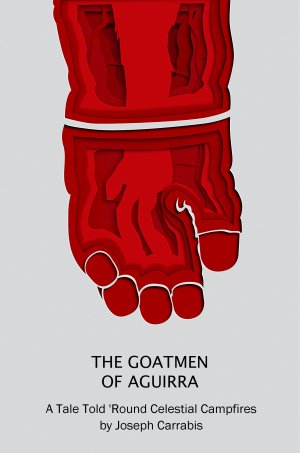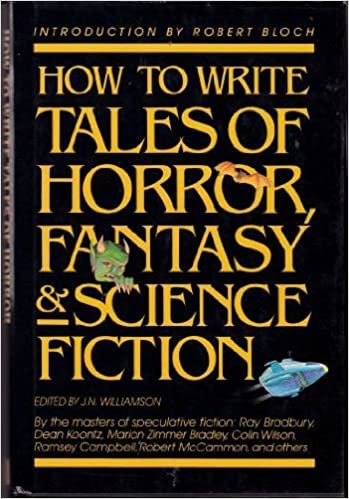The Goatmen of Aguirra is one of my favorite stories and, based on comments, popular among my readers (thankee!). It appears in my self-published Tales Told ‘Round Celestial Campfires, as an individual ebook The Goatmen of Aguirra: A Tale Told ‘Round Celestial Campfires, and was serialized in Piker Press in 2019.
I’m sharing it here because a friend is having some challenges using 1st Person POV, and The Goatmen of Aguirra uses 1st Person POV throughout.
Read The Goatmen of Aguirra, Part 12.
Hope you enjoy.

The Goatmen of Aguirra (Finale)
Tenku wakes me early in the morning. He is as excited as I’ve ever seen him.
“Where are we going?”
“Yes.” He gently butts me.
I know what he means. The nannies are kidding. The field behind the village is littered with nannies on their sides, their legs folded slightly up towards their bellies and their eyes glazed. They do not scream or weep. There seems to be no pain at all. Tenku leads me to Hepob. Gomer is with her.
I ask questions, the xenopologist in me still strong even though I’m sure my transmissions are no longer reaching any ship.
Kids are born one hundred twenty-eight Aguirran days after conception. Kids are always born in the village. They’re only single births with twins being very rare and it is unusual for any individual pair to have more than two children. If there is is a methodology for deciding which partners will have more kids it alludes me.
It is dawn and the kidding begins. Like popcorn in an old style popper, the plateau pops with the bleats of first one kid then another, the sky filling with bleats and nays and hinnies as the kids pop from their mothers, the air turning first rich then acrid then pungent as puddles of blood and bowel and afterbirth meet the rising sun. The kids’ coats are damp, matted flat and mucousy. They steam as they dry. This is perhaps why they are born so early in the day; to ensure their coats being dry and fluffed before the night’s cold and rain. Close my eyes and I can hear the nannies’ tongues licking, scraping, and cleaning their kids, followed closely by the hollow sucking as the nannies consume the afterbirth.
It is the first time I’ve seen kids this early in their life. They more closely resemble goats back home –
Home.
Where am I?
There is a cracking sound inside my head and I feel myself drawn into the ground, my spine and legs fused into a trunk and roots reaching deep.
Where am I?
– although their craniums are noticeably larger and the eyes more obviously placed for binocular vision. But male and female kids walk on all fours and follow their mothers around just a few moments after birth, butting their mothers legs, near knocking the nannies over to get at their milk.
Hepob is on her knees before me, a newborn billy nipping her coat to get at her teats. Gomer comes over to me and places his left hand forward. “She is yours now. I have given you a son.”
“What?”
He leans forward and grabs my testicles in his hand. His left hand. He takes his hand away then grabs me with his right. He says something, an untranslatable word but now its meaning is clear to me. Home. The untranslatable word is “I-Am-Home.” The meaning is not transitive but transcendental. It is an equivalence.
Does this thing work anymore? The lights come on. I know it records. I just don’t know if there’s anybody listening. Or anyone to listen.
Tenku is dead. Gomer, soon, I think. Age, when it comes, comes quickly to them. Gracefully, though. He has left me his Wa’asis. Hepob is teaching her daughters how to grow and cultivate it. What was once so unique I now know as ordinary. Unlike us, Goatmen mate for life. A mate’s passing is announced with a song. I suppose it would be translated as “He/She waits for us” that starts with the mate and finishes when the youngest has chorused that line.
The Theisen are always with me now. They’ve told me about their technology, one we had long, long ago and forgot because something inside us didn’t let the blue-eyed Neanderthals live.
I have blue eyes.
Our technology, they tell me, was developed because we feared the unique, the different, thus we created a science which ultimately made everyone equal without and did nothing to make us equal within. We developed the means to give everyone equality then mocked and mistrusted those who used the means.
How is it here the Neanderthals lived? How come evolution provided no challenges?
A young nanny has asked me to take her to the Theisen. I was afraid of this. As soon as she asked, by a communication I do not yet understand, Gomer was there. “Come,” he said. After some walking we are near a cave I recognize but don’t know where from. “You go in. I’ll stay here and watch.”
There is no need for Wa’asis this time, but I take some anyway. Dutch Courage for what’s inside.
I’m climbing the Theisen. There is no indication of how long I’ve been doing it, although I feel many days and nights have passed. As always with them, I am naked.
Long before I see their tops, I see Aguirra fall away below me. Shortly after, stars dwindle in the distance. Galaxies come and go. Nebulae bathe me then recede. The gravity storms of blackholes and radiation tides of pulsars wash over me without affect as I pass them, one by one.
Still the tops of the Theisen aren’t in sight. There is something, though. A barrier of some kind. It is semi-solid, firm yet yielding, and like Ezekiel breaking through to see the mechanisms of the Universe, I go through.
I know where I am. Robin is gone. So is Jeremy. So is The Merrimack and her crew. Earth is no more. There is no taste or scent of her.
Definitions are by what, not by who, and at the top of the Theisen the what and the who are one.
I see myself reflected in the whirlpools of this space, a goatman with broken horns staring at me. He waves and smiles.
And I remember. When I was a child. Shopping for Christmas Trees. It was a large lot. A field. Acres and acres of trees. Getting lost. Not hearing my parents voices or the voices of any elders or other children at all.
Just hearing the voices of the trees.
Screaming at what they said. Not wanting to accept or believe but knowing it was true.
I let go of the Theisen and start to fall, unafraid of the descent, knowing where I am and knowing now which direction is down.
I emerge from the cave and know many days have passed. Gomer, my first-friend and -brother, has died outside the cave. Hepob seeks comfort from me and weeps. Between sobs she whispers “He waits for us” and, not understanding, dimly aware, I quietly join in.
My kid is ten years old now. He is strong and fine and makes me proud. Gomer, too, I think is proud. In my dreams he offers to go into Hepob again if I wish another child.
Not yet, I tell him. There is something first I must do.
Greetings! I’m your friendly, neighborhood Threshold Guardian. This is a protected post. Protected posts in the My Work, Marketing, and StoryCrafting categories require a subscription (starting at 1$US/month) to access. Protected posts outside those categories require a General (free) membership.
Members and Subscribers can LogIn. Non members can join. Non-protected posts (there are several) are available to everyone.
Want to learn more about why I use a subscription model? Read More ch-ch-ch-ch-Changes Enjoy!


